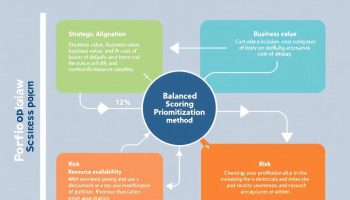
Time series analysis tools like ARIMA, Prophet, machine learning algorithms, exponential smoothing methods, and decomposition techniques create the foundation for extracting valuable insights from temporal data patterns. These advanced methods help businesses transform historical data into precise forecasts, identify trends, spot anomalies, and understand seasonal variations affecting operational metrics.
Why Businesses Need Time Series Analysis Tools
Time series analysis tools give companies significant competitive edges by boosting predictive abilities across various business areas. You’ll find these tools essential for:
- Optimizing inventory management
- Planning your workforce
- Improving revenue forecasts
- Allocating budgets more effectively
They reduce uncertainty when you’re making crucial decisions. Companies using time series analysis tools can adapt faster to market shifts, discover new opportunities, and address potential problems before they grow. For businesses dealing with cycles, seasonal changes, or complex time-related patterns, these analytical methods convert raw historical data into practical intelligence. This enables you to develop strategies based on data rather than instinct, which often leads to expensive mistakes.
Companies that leverage advanced time series analysis tools can improve their forecasting accuracy by up to 30%, allowing for better decision-making and resource allocation.
Top 5 Time Series Analysis Tools: Enhance Your Forecasting Today!
In today’s data-driven world, effective forecasting is crucial for making informed business decisions. This section highlights five impactful time series analysis tools that can significantly enhance your forecasting capabilities. Each tool offers unique features and advantages, catering to various business needs and complexities. From traditional statistical methods like ARIMA to advanced machine learning algorithms, these tools help you unlock insights from your historical data.
Whether you’re predicting sales trends, managing inventory, or planning budgets, mastering these time series analysis tools can empower your organization to make data-driven decisions with confidence. Dive into the details of each tool to discover how they can support your forecasting efforts and improve overall business performance.
“`html
1. ARIMA (AutoRegressive Integrated Moving Average)
ARIMA stands as a foundational time series analysis tool that captures temporal structures in your data. When applying time series analysis tools to business forecasting, ARIMA provides remarkable accuracy for short to medium-term predictions. This statistical technique helps you model historical patterns to forecast future values by combining autoregressive, differencing, and moving average components.
You can implement ARIMA models for various business applications including revenue forecasting, inventory management, and budget planning. For businesses with cyclical patterns, Seasonal ARIMA (SARIMA) extends the base model to handle quarterly, monthly, or even daily seasonality. The Box-Jenkins methodology offers a structured approach to identify the optimal model parameters for your specific data.
When implemented correctly, ARIMA helps you reduce forecasting errors and make data-driven decisions based on statistical evidence rather than intuition alone.
“`
2. Prophet: A Leading Time Series Analysis Tool for Business Forecasting
Prophet stands out among time series analysis tools for its ability to handle business data with complex seasonal patterns. Developed by Facebook, this open-source forecasting tool requires minimal configuration while effectively managing missing data and outliers that often plague business datasets.
The tool’s popularity stems from its intuitive approach to time series analysis, making advanced forecasting accessible to analysts without extensive statistical expertise. You can quickly implement Prophet to predict future trends based on historical patterns.
In retail environments, Prophet excels at sales forecasting by automatically detecting weekly, monthly, and yearly seasonality. Website administrators use it to predict traffic fluctuations, while call centers implement it for staffing optimization based on predicted call volumes.
One of Prophet’s key strengths is its capacity planning capabilities through uncertainty intervals, allowing businesses to prepare for various scenarios. The tool also seamlessly incorporates holiday effects, which is crucial for businesses experiencing irregular spikes during specific calendar events.
Expert Insight: Utilize Prophet for effective business forecasting by leveraging its ability to manage complex seasonal patterns and missing data. Its user-friendly interface allows analysts to easily predict trends, making it ideal for retail sales, website traffic, and call volume forecasts. Don’t overlook its capacity planning capabilities and holiday effect integration for robust planning.
3. Machine Learning-Based Forecasting
Machine learning approaches have revolutionized time series analysis tools for complex forecasting challenges. When traditional statistical methods fall short, algorithms like Random Forests, XGBoost, and LSTM neural networks excel at identifying intricate patterns in your time series data. These sophisticated techniques automatically capture non-linear relationships and effectively handle multiple variables simultaneously.
The business value of machine learning forecasting lies in its versatility across different scenarios. You can implement these time series analysis tools to predict customer churn by analyzing historical engagement data, forecast stock price movements with greater accuracy, or optimize energy consumption planning across facilities.
For maximum effectiveness, focus on proper feature engineering when preparing your time series data. This includes creating lag features, rolling statistics, and date-based attributes that help the models recognize temporal patterns. Recent advancements in predictive analytics have also enabled transfer learning applications, where knowledge gained from forecasting one business metric can improve predictions for related metrics.
These approaches typically require more data than traditional forecasting methods but deliver superior results when dealing with complex business environments.
Expert Insight: Leverage machine learning for forecasting by employing algorithms like Random Forests or LSTMs to uncover complex patterns in your time series data. Focus on robust feature engineering to enhance model performance, and consider transfer learning to optimize predictions across related metrics. More data typically leads to better results in complex scenarios.
4. Exponential Smoothing Methods
Exponential smoothing methods are fundamental time series analysis tools that prioritize recent data points over older ones. When implementing these techniques, you gain forecasting capabilities that adapt quickly to changing business conditions while maintaining simplicity in application.
These time series analysis tools work by applying exponentially decreasing weights to historical observations. The single exponential smoothing model handles data without clear trends, while Holt’s method incorporates trend components. For businesses facing seasonal fluctuations, the Holt-Winters method provides triple exponential smoothing that captures seasonal patterns effectively.
Supply chain managers use exponential smoothing to optimize inventory levels and predict demand fluctuations. Financial analysts apply these techniques to forecast revenue streams and market movements. Service industries leverage them to predict staffing needs based on anticipated customer demand.
The effectiveness of these methods depends on selecting appropriate smoothing parameters:
- Alpha (α): Controls the influence of recent observations
- Beta (β): Adjusts trend component sensitivity
- Gamma (γ): Manages seasonal pattern weighting
Expert Insight: When using exponential smoothing methods for time series analysis, ensure you carefully select smoothing parameters (alpha, beta, and gamma) to optimize forecasting accuracy. Tailor your approach to your specific data characteristics, whether addressing trends or seasonal patterns, to enhance decision-making and responsiveness in your business operations.
5. Time Series Decomposition: Unlocking Pattern Insights
Time series decomposition is one of the most valuable time series analysis tools for dissecting complex business data. This technique breaks down your time series data into three fundamental components: trend, seasonality, and residual (or irregular) elements. By separating these patterns, you gain clearer insights into what’s actually driving your business metrics.
When analyzing sales performance or customer engagement metrics, decomposition helps you distinguish between long-term growth trends and regular seasonal fluctuations. For instance, retail businesses can identify whether increased holiday sales represent genuine business growth or merely seasonal patterns that repeat annually.
The most common decomposition methods include:
- Classical decomposition (additive or multiplicative)
- STL (Seasonal and Trend decomposition using LOESS)
- X-12-ARIMA (used by many government statistical agencies)
Decomposition provides several key business benefits:
- Isolates the impact of marketing campaigns from background trends
- Helps establish more accurate baseline expectations for performance
- Enables more targeted strategic planning initiatives based on underlying patterns
- Improves anomaly detection by highlighting unusual residual components
When implementing decomposition techniques, focus first on determining whether an additive or multiplicative model best fits your data structure. For most business metrics showing proportional growth over time, multiplicative models typically perform better.
Expert Insight: Utilize time series decomposition to analyze business data by separating trend, seasonality, and residuals. This approach enhances your understanding of sales performance and customer engagement by distinguishing genuine growth from seasonal effects, leading to more accurate forecasts and strategic planning initiatives. Choose between additive or multiplicative models based on your data’s characteristics.
Time Series Analysis Tools
Time series analysis tools, including ARIMA, Prophet, machine learning algorithms, exponential smoothing methods, and time series decomposition, provide powerful techniques for analyzing temporal data patterns in business contexts. These sophisticated methods allow organizations to extract meaningful insights from historical data, identify underlying trends, and generate accurate forecasts for informed decision-making.
Transforming Raw Data into Actionable Intelligence
Time series analysis tools enable businesses to transform raw temporal data into actionable intelligence, driving competitive advantage in today’s data-driven marketplace. By implementing techniques such as:
- ARIMA for short-term forecasting,
- Prophet for handling seasonal patterns,
- Machine learning for complex relationships,
- Exponential smoothing for adapting to changing conditions, and
- Decomposition for pattern identification,
companies can optimize inventory management, improve resource allocation, enhance financial planning, and respond proactively to market trends rather than reactively.






